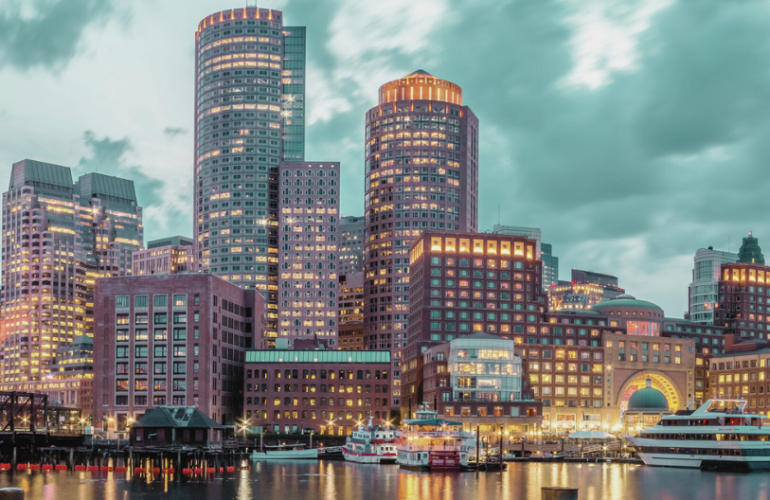COMPLIANCE GUIDE
WHAT IS THE CHULA VISTA BUILDING ENERGY SAVING ORDINANCE (BESO)?
The Chula Vista Building Energy Saving Ordinance (BESO), is a citywide energy benchmarking & building performance program requiring owners of existing commercial and multifamily buildings to report energy use annually, using ENERGY STAR® Portfolio Manager®, meet building performance standards every 5 years, and demonstrate improvements every 10 years.
DOWNLOAD CHULA VISTA BESO BROCHURE
BESO PROGRAM HIGHLIGHTS
Policy
CITY OF CHULA VISTA CLIMATE ACTION PLAN
Bill Text
CHULA VISTA BUILDING ENERGY SAVING ORDINANCE
Enforcing Agency
CITY OF CHULA VISTA
Size of Property
20,000 SQ. FT. AND ABOVE
Property Type
COMMERCIAL, INDUSTRIAL, MULTIFAMILY BUILDINGS
Required Information
12 MONTHS ENERGY AND BUILDING USE DATA
Phase II Building Performance
Standards Compliance
YES
Fees
N/A
BESO ORDINANCE DEADLINES
PHASE I – BENCHMARKING DISCLOSURE
May 20 – Annually
PHASE II – BUILDING PERFORMANCE STANDARDS
| CONSERVATION REQUIREMENT | COMPLIANCE DUE DATE 50,000+ SQ.FT. | COMPLIANCE DUE DATE 20,000-49,999 SQ.FT. |
| Commercial Buildings Performance Targets / A/RCx | Every five (5) years beginning 2023 or later. Schedule TBD. |
Every five (5) years beginning 2026 or later. Schedule TBD. |
| Commercial Buildings Min. Improvement Requirements | Every ten (10) years beginning 2028 or later. Schedule TBD. |
Every ten (10) years beginning 2031 or later. Schedule TBD. |
| Multifamily Prescriptive Upgrades |
2023 or later, schedule TBD. | 2023 or later, schedule TBD. |
EXEMPTIONS FROM BENCHMARKING
- No/temporary certificate of occupancy for more than half of the reporting calendar year.
- The building is scheduled to be demolished one year or less from the reporting date.
- The building is under financial distress.
- The building does not receive energy or water service.
- Disclosure of energy usage data would result in the release of proprietary information covered by applicable privacy law(s).
PROGRAM ENFORCEMENT
Failure to comply with this law results in a notification and a 60-day window. If a building owner/agent does not submit the report within that time, they are subject to fines of up to $2,250 on a per-incident basis, with the amount based on the building’s gross floor area (GFA).
PHASE II BUILDING PERFORMANCE STANDARDS REQUIREMENTS
Phase II consists of conservation requirements every five (5) years, and demonstrating minimum improvements every ten (10) years. The requirements are categorized between multifamily and commercial building types.
COMMERCIAL
CONSERVATION REQUIREMENTS
Buildings must meet either the Performance Targets or the Audit Requirement every 5 years, and the Minimum Improvement requirement every 10 years.
MULTIFAMILY
PRESCRIPTIVE MEASURES
Buildings built prior to 2006 must perform prescribed measures. Properties with Significant Common Load are subject to Commercial Conservation Requirements.
Meeting exemptions can save up to 65% off the cost of a full ASHRAE Level II Audit/RCx Report. If you need benchmarking performed or an evaluation of your existing benchmarking report, please contact us right away.
COMMERCIAL PROPERTIES: CONSERVATION REQUIREMENT DETAIL
High Performing Buildings are exempt from all requirements. All other covered commercial buildings must demonstrate energy reductions that meet or exceed Performance Targets, and submit an ASHRAE Level I or higher energy audit and retro-commissioning report (A/RCx).
EXEMPTIONS
Buildings must meet one of the following requirements to be exempt from both the 5-year Performance Targets and the 10-year Minimum Improvement Requirement:
- HIGH PERFORMANCE BUILDING:
- Submit a benchmarking report for the most recent compliance deadline AND meet any of the following:
- ENERGY STAR score of 80 or greater
- Achieved ENERGY STAR certification
- Achieved LEED Existing Building Certification for three (3) of five (5) preceding years
- The Property has been occupied for less than five (5) years
- The Property is in Financial Distress
- A demolition permit for the entire Property has been issued and demolition work has commenced
- The Property is not subject to the Benchmarking Requirement
CONSERVATION REQUIREMENT DETAIL
Non-residential buildings, and multifamily buildings with Significant Common Load which do not meet any of the above exemptions must:
EVERY FIVE (5) YEARS
- Meet or exceed the Improvement Target % (see chart below) by reducing energy use compared to the baseline ENERGY STAR score or EUI equivalent, within the 5-year compliance window. OR;
- If the building does not meet or exceed the Improvement Target %, An ASHRAE Level I or higher energy Audit and Retro-commissioning (A/RCx) report must be conducted and submitted to the City.
EVERY TEN (10) YEARS
- Meet or exceed the Mandatory Minimum Improvement (see chart below) by reducing energy use compared to the previous (5-year) baseline ENERGY STAR score or EUI equivalent.
[su_table alternate=”no”]
| BASELINE ENERGY STAR SCORE / EQUIVALENT SITE EUI-WN | 5-YEAR IMPROVEMENT TARGET | 10-YEAR MANDATORY IMPROVEMENT |
| 1-45 / 80+ | 30% | 15% |
| 46-65 / 51-79 | 20% | 10% |
| 66-79 / 19-50 | 10% | Exempt |
| 80+ / 0-18 | Exempt | Exempt |
[/su_table]
MULTIFAMILY PROPERTIES: CONSERVATION REQUIREMENT DETAIL
High Performing Buildings are exempt from all requirements. All other covered multifamily buildings must meet the prescriptive measures requirement by their first 5-year deadline. Additionally, buildings with Significant Common Load (10,000+ Sq. Ft. master metered, or shared common meter/load) are subject to the Conservation Requirements outlined above for commercial properties.
EXEMPTIONS
Buildings must meet one of the following requirements to be exempt from Conservation Requirements:
- HIGH PERFORMANCE BUILDING:
- Submit a benchmarking report for the most recent compliance deadline AND meet any of the following:
- ENERGY STAR score of 80 or greater
- Achieved ENERGY STAR certification
- Achieved LEED Existing Building Certification for three (3) of five (5) preceding years
- The Property has been occupied for less than five (5) years
- The Property is in Financial Distress
- A demolition permit for the entire Property has been issued and demolition work has commenced
- The Property is not subject to the Benchmarking Requirement
PRESCRIPTIVE MEASURES DETAIL
Multifamily Residential Properties constructed prior to 2006 must perform the minimum number of energy efficiency upgrades, or ‘measures’ required in the table below, within all tenant spaces where utility costs are borne by tenants. Owners may choose from a prescribed list of applicable measures. Efficiency measures already in place, or not included on the list count toward satisfying the minimum number of measures.
[su_table alternate=”no”]
| YEAR BUILT | CLIMATE ZONE 7* | CLIMATE ZONE 10* |
| Pre-1978 | Choose four (4) Measures | Chose five (5) Measures |
| 1978 – 1991 | Choose three (3) Measures | Chose five (5) Measures |
| 1992 – 2005 | Choose two (2) Measures | Chose five (5) Measures |
[/su_table]
* Chula Vista Climate Zone Map
PRESCRIPTIVE MEASURE LIST SAMPLE
- Attic Insulation
- Air Sealing
- Cool Roof
- Duct Sealing
- LED Lighting
- Water Heating Package
- Heat Pump Water Heater Replacement
- HVAC Replacement
- Windows
GREEN ECONOME PHASE II (A/RCx) PROCESS
-
- Evaluate the Phase I benchmarking report(s) for the building’s least-cost path to Phase II compliance (or complete benchmarking, if annual disclosure hasn’t been met).
- Provide Phase II proposals for applicable services.
- Upon signed agreement, fulfill Phase II services, submit compliance requirements to the City, and provide reports to the building owner/representative.
AS BENCHMARKING CONSULTANTS AND ESG REPORTING EXPERTS, WE WILL WORK WITH YOU TO DEVELOP A BUILDING PERFORMANCE BASELINE FOR COMPLIANCE
Green Econome takes an accurate, efficient, and comprehensive approach to ENERGY STAR® benchmarking that ensures you receive meaningful data about the performance of your building for disclosure compliance, ESG reporting, green loans, auditing, or whatever your project needs may be. Our property use details and utility data collection, review, and verification process leads to complete benchmarking.




